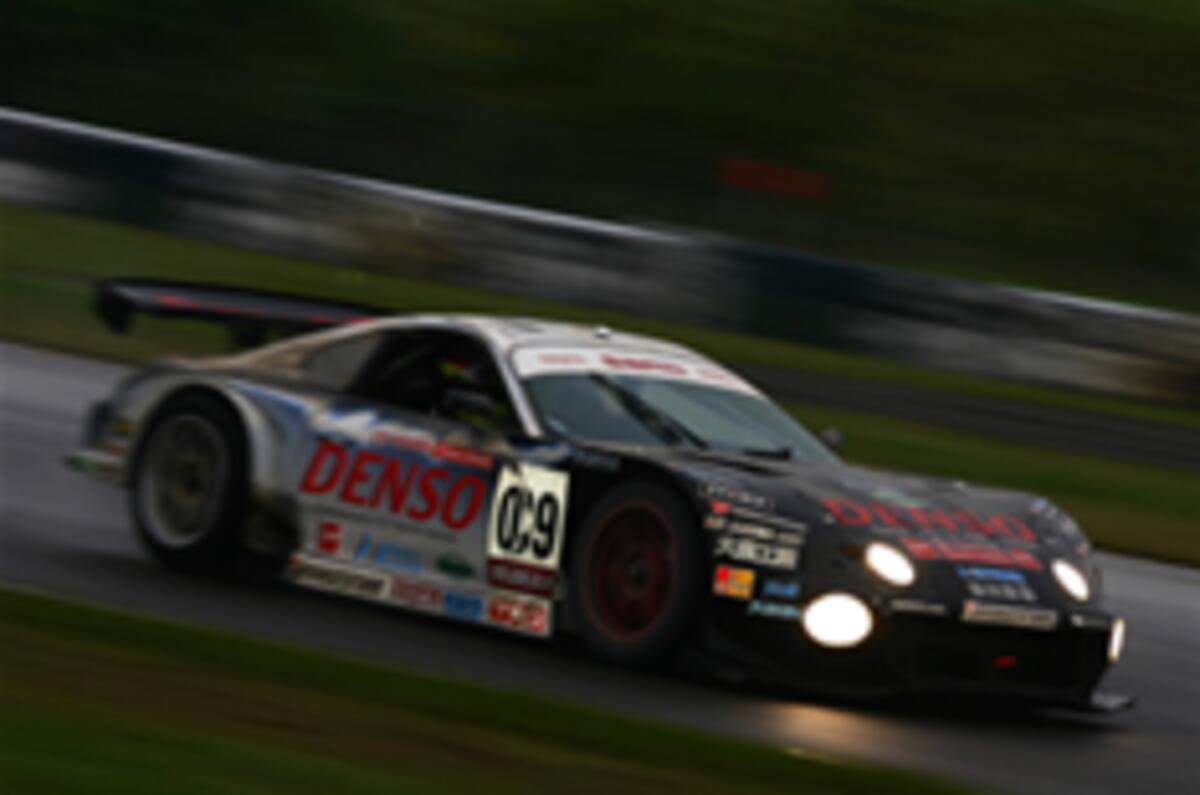Toyota created a small piece of motor racing history last week (15-16 July) when this hybrid-powered V8 Supra HV-R stormed to victory in Japan’s Tokachi 24-hour race, leading the grueling event from start to finish. The race, in the northern isle of Hokkaido, is Japan’s classic around-the-clock enduro and holds a special attraction for Toyota: to prove the strength and effectiveness of its hybrid system on home turf under full-on racing conditions. In 2006, Toyota first entered at Tokachi with a near-standard GS450h. Confounding some skeptics, the car went the distance, finishing 17th overall. This year’s attempt was a lot more serious. Toyota built this special hybrid-powered Supra just for the race, with overall victory very much the focus. On the face of it, this Supra HV-R comes over as a curious mix of past, present and future. The starting point is one of the works-backed Supras left over from Japan’s 2005 domestic Super GT series. Underneath, Toyota devised a completely new racing hybrid drivetrain, basing it around the same 4.5-litre V8 that the Supra had previously used in Super GT. In race trim, this V8 is air-restricted to around 480bhp. The key point with the new system is its two in-wheel electric motors up front, each developing 10kW. At the back, Toyota has a second, more powerful electric motor packing 150 kW. It’s a complex set-up, but the idea is to have the Supra recover energy to power the hybrid system more efficiently under heavy deceleration and braking.A further tweak is the Supra’s quick-charging capacitor, used instead a conventional rechargeable battery. Toyota’s Supra HV-R took to the grid as the only car in the GT1 class and ran in the lead right to the chequered flag, even though the first half of the race was hit by atrocious weather, with heavy rain and poor visibility. While the HV-R faced little opposition this year, the pressure was still on to complete the race and achieve what’s the first ever race victory for a hybrid-powered car. What happens now, Toyota isn’t saying. According to an insider, the Supra body was used this year because there wasn’t time to build a special shell to go over the new racing hybrid system. Having conquered the Tokachi 24-hours, Toyota may well be looking now to a much bigger stage. The obvious place to go next would be Le Mans, to prove the might of Toyota hybrid technology against the Audi and Peugeot diesels. Don’t bet against it.
Petrol-electric Supra storms to victory in Japan's Tokachi 24-hours
Close
Join our WhatsApp community and be the first to read about the latest news and reviews wowing the car world. Our community is the best, easiest and most direct place to tap into the minds of Autocar, and if you join you’ll also be treated to unique WhatsApp content. You can leave at any time after joining - check our full privacy policy here.




Add your comment